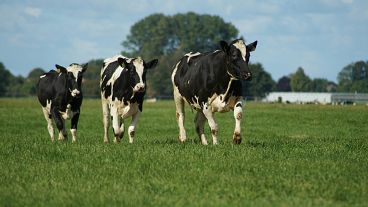Climate change makes forests more vulnerable to invasive species, with insects, pests and disease pathogens threatening tree growth and survival.
Climate change is increasing the susceptibility of the world's forests to stressors such as wildfires and pests, according to a new publication by the Food and Agriculture Organization of the United Nations (FAO).
The Committee on Forestry (COFO), the FAO’s top forestry governing body, was tasked with identifying emerging policy and technical issues, seeking solutions, and advising the FAO on appropriate action.
The resulting report reveals the vulnerability of forests worldwide and emphasises the role of innovation in achieving a sustainable future for the forestry sector.
Climate change is making the world’s forests more vulnerable
Titled ‘The State of the World’s Forests 2024: Forest-sector innovations towards a more sustainable future’, the report found that wildfire intensity and frequency are increasing, including in areas not previously affected.
In 2023, fires released an estimated 6,687 megatonnes of carbon dioxide globally.
Boreal (forests in the northern hemisphere) fire was previously responsible for about 10 per cent of global CO2 emissions.
In 2021, such fires reached a new high - mainly driven by extended drought causing an increase in fire severity and fuel consumption - and accounted for nearly one quarter of total wildfire emissions.
Climate change also makes forests more vulnerable to invasive species, with insects, pests and disease pathogens threatening tree growth and survival.
Pine wood nematode (a microscopic roundworm) has already caused significant damage to native pine forests in some countries in Asia, and areas of North America are projected to experience devastating damage due to insects and disease by 2027.
Global wood production, meanwhile, remains at record levels. After a brief dip during the COVID-19 pandemic, production is back at about 4 billion cubic metres yearly.
Nearly 6 billion people use non-timber forest products, and 70 per cent of the world’s poor rely on wild species for food, medicine, energy, income and other purposes.
Projections indicate that global roundwood demand could increase by as much as 49 per cent between 2020 and 2050.
AI and drones will help protect the world’s forests
The report presents five innovative methods to bolster forests against climate change, based on technological, social, policy, institutional and financial solutions.
AI will be used to facilitate the automated analysis of a vast volume of existing and future data collected daily by drones, satellites and space stations.
Mass timber - engineered for strength, durability and sustainability - and other wood-based innovations will be adopted that can replace fossil-based products in the building sector.
The plans also include policies aimed at engaging women, youth and Indigenous peoples in developing locally led solutions while innovations in public and private sector finance will enhance the value of standing forests.
The report lists five enabling actions that will help scale up innovation in the forest sector: raising awareness; boosting innovation skills, capabilities and knowledge; encouraging transformational partnerships; ensuring more and universally accessible finance for innovation; and providing an incentivising policy and regulatory environment.















